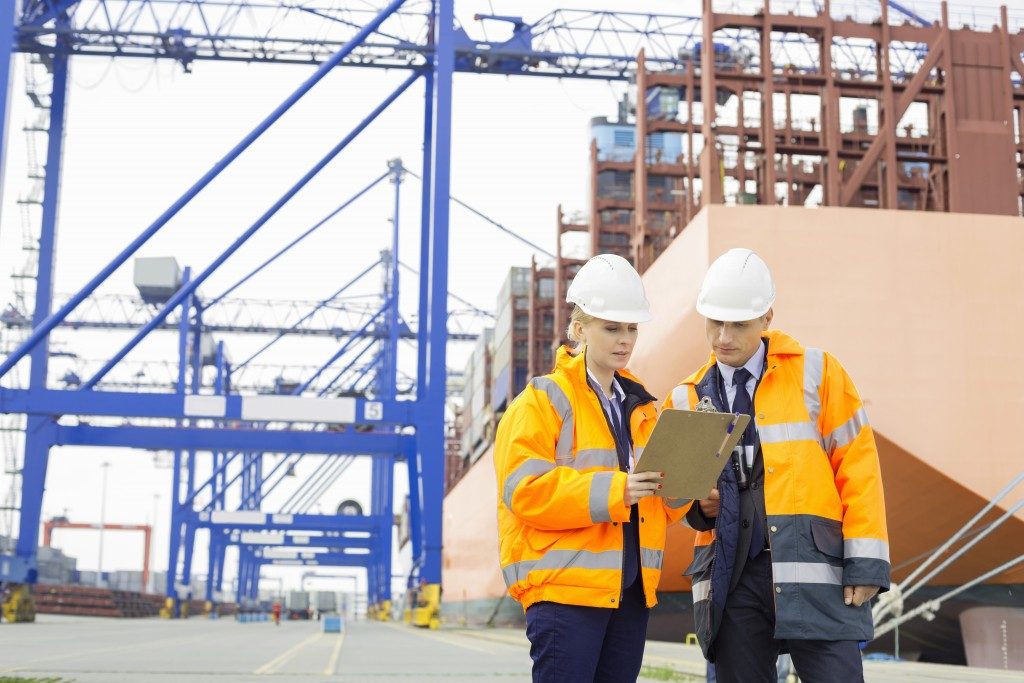High-visibility clothing was designed to be worn by those who need to work in the evenings or in areas with low-light conditions. Those who travel at night or have nighttime activities such as running or cycling also benefit from such types of clothes. When your company requires that some work is done in such poorly lighted conditions, hi-vis workwear is an essential part of the uniform set. NZ and Australia companies, in particular, are seeing an influx of construction and manufacturing activities that necessitate brightly-colored uniforms that allow workers to be easily visible and noticeable.
Why High-Visibility Uniforms are Necessary
High-visibility workwear is made of brightly colored, sometimes neon fabrics and reflective materials, with the goal to make wearers visible in low light conditions. These colors, when hit by light look even brighter so anybody looking will immediately see and acknowledge that somebody is in the area. In the absence of shining light, like when it’s nighttime or in gloomy weather during the day, such hues remain noticeable.
In addition to visibility, bright colors also help reduce the risks of accidents. This is especially useful for those who are in close contact with traffic, such as road workers, traffic aides, street cleaners, and more. Having high-vis clothing can help boost workers’ overall safety.
Not just accidents, neon uniforms, jackets, vests, and other coverups also reduce the incidents of death. While clothes do not solely determine safety in a work setting, hi-vis clothes are a great preventive measure against life-threatening situations.
Where and When Hi-Vis Workwear Should Be Worn
High-vis clothing is required for certain types of jobs, mostly construction-related and zones where equipment and vehicles are being operated. This also applies to drivers working in such areas and have to leave their vehicles for a while. In most cases, it is composed only of a sleeveless vest that’s worn over regular work clothes. A brightly-colored jacket may also be worn during the colder seasons to replace the usual jackets or on top of typical clothing as reinforcement against the low temperature.
Those who work in public construction projects will need a higher standard of high-vis workwear because they are exposed to open areas where many people might not be aware that there is work being done and are not consciously watching out for workers on the site. In a building project, having to carry huge supplies and work alongside heavy equipment might affect visibility and block lines of sight. Wearing extra bright and reflective clothing will help ensure that workers are easily identified and seen.

Beyond construction sites, high-vis workwear is also helpful for those who work in the sea, such as fishermen, coastguard, ocean crew, and more. For this case, orange reflective material is used because studies have proven that this color is the most noticeable when placed against the dark or black background of the ocean.
There are certain types of high-visibility clothing that are retro-reflective, which means when light is shone about it, the same light is bounced back to its source. Simply put, if your car’s headlights hit it, the light will be reflected back to the driver or anybody standing near the source. Other materials called glass bead technology work by scattering the light that comes from whatever angle, making it even more noticeable even at peripheral vision.
The most common colors used for high-vis workwear are orange, red, pink, blue, yellow, and green. Of these, yellow and orange are popular choices because they are the most reflective. Take note that such type of work clothing requires accreditation from safety regulatory bodies. In New Zealand, hi-vis workwear should be compliant with safety standard AS/NZS 4602.1:2011.
In addition to safety, brightly hued workwear also helps team leaders identify authorized personnel at any location, especially in such areas where access is restricted. The uniformity of the staff’s appearance will make it easier for visitors to see who the company employees are while also fostering a sense of corporate identity.
